

Looking for originality in garden AND cooking? Kaffir lime is what you need to grow!
Kaffir lime key facts :
Botanical name – Citrus hystrix
Family – Rutaceae (Rue family)
Type – fruit tree
Height – 8 to 20 feet (2.50 to 6 m)
Breadth – 6 to 10 feet (2 to 3 meters)
Exposure – sun
Soil – should contain lots of organic material, not limestone, well-draining
Hardiness – not so hardy 23°F (-5°C)
Foliage: evergreen – Flowering: spring – Harvest: Fall
Discover how to plant and care for it, and you’ll be overloaded with fruits that look like a green lime with a hundred bee stings.
Table of Contents: :
→ Note: Kaffir lime is often confused with bergamot. The bergamot tree is a different citrus variety.
In many respects, kaffir lime looks a lot like yuzu:
This fruit tree is native to Asia, more specifically an Indonesian island located east of Bali called Sumbawa. This is why yet another name for this fruit is “Combava” or Kombava.
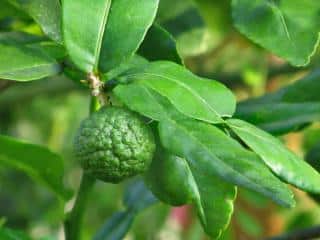
Makrut (another name for kaffir lime) isn’t very hardy, so it’s better to plant it in spring. However, if you live in regions where winter is mild, you can also do the planting in fall.
Makrut can only be planted directly in the ground in areas with a tropical climate, or in places where it never freezes over in winter. Worry not! The growth pattern of this fruit tree make it possible to plant it in pots in order to bring it indoors before the first frost hits.
If your location checks all the kaffir lime requirements, most of the work is done already, and you’ve simply got to:
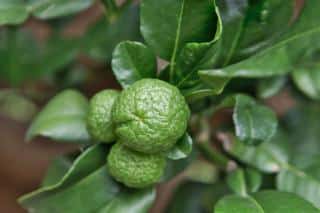 dig a planting trench that’s 8 inches (20 cm) wide and deep.
dig a planting trench that’s 8 inches (20 cm) wide and deep.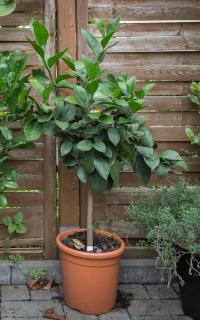
As for the potting soil, mix the following: ¼ peat soil, ¼ sand, and ½ soil mix. These ingredients are used in garden stores to prepare citrus potting mix.
Also, you can add perlite (sometimes sold under the name “vermiculite”). This last additive enhances drainage while increasing water availability in the substrate.
Before the planting itself, spread a drainage layer of clay pebbles an inch or so thick (a few centimeters) along the bottom, without clogging the holes. Fill the rest of your container with the potting soil, and settle your makrut lime inside. Around the root ball, add more soil and press it down. The last step is to water once, abundantly.
Smart tip: To keep moisture in the ground, spread natural mulch to reduce water loss through evaporation.
Kaffir lime needs particular care in the following:
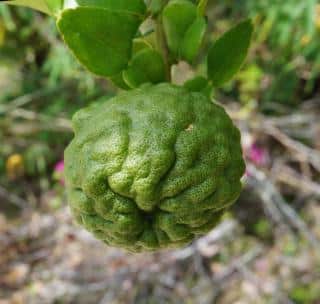 In spring and summer, make sure you’re on top of the watering so that the soil stays moist without staying drenched. During the dormant phase (fall, winter), reduce the amount of water you’re providing.
In spring and summer, make sure you’re on top of the watering so that the soil stays moist without staying drenched. During the dormant phase (fall, winter), reduce the amount of water you’re providing.Note that pruning isn’t necessary, except to remove dead or damaged branches. Do so at the end of fall.
To obtain new makrut lime specimens, either sow its seeds, or prepare softwood cuttings at the end of summer.
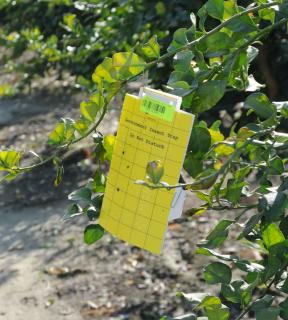
Even though it isn’t a disease, but a nutrient deficiency, kaffir lime occasionally suffers from chlorosis.
Lastly, make sure to check whether your hardiness zone matches that of this citrus.
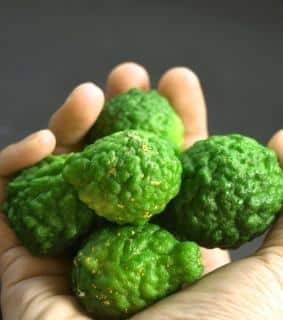
Pick them when they’ve turned a beautiful, deep green color: that’s when they’re most fragrant and tasty.
Leaves are ready for harvest from mid-spring to the end of summer. Don’t remove too many, it would weaken the tree.
Keep the fruits either in the vegetable compartment of the refrigerator (for a fortnight) or in the freezer (for several months). Same thing for leaves.
Makrut is interesting in cooking both for its fruits and for its leaves.
Makrut lime only gives very little juice, so what’s mostly used in cooking is its very fragrant peel. Shred a slivers off with a grating tool. It’s ideal to complement gravy, desserts, and even to flavor rhum.
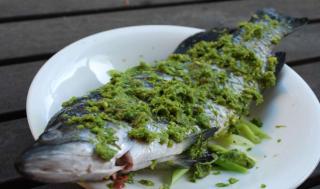
Slice them into thin slivers and toss a few in your recipes, gravy, or prepare an infusion with them.
They’ll add light citrus-y taste to all your culinary achievements.